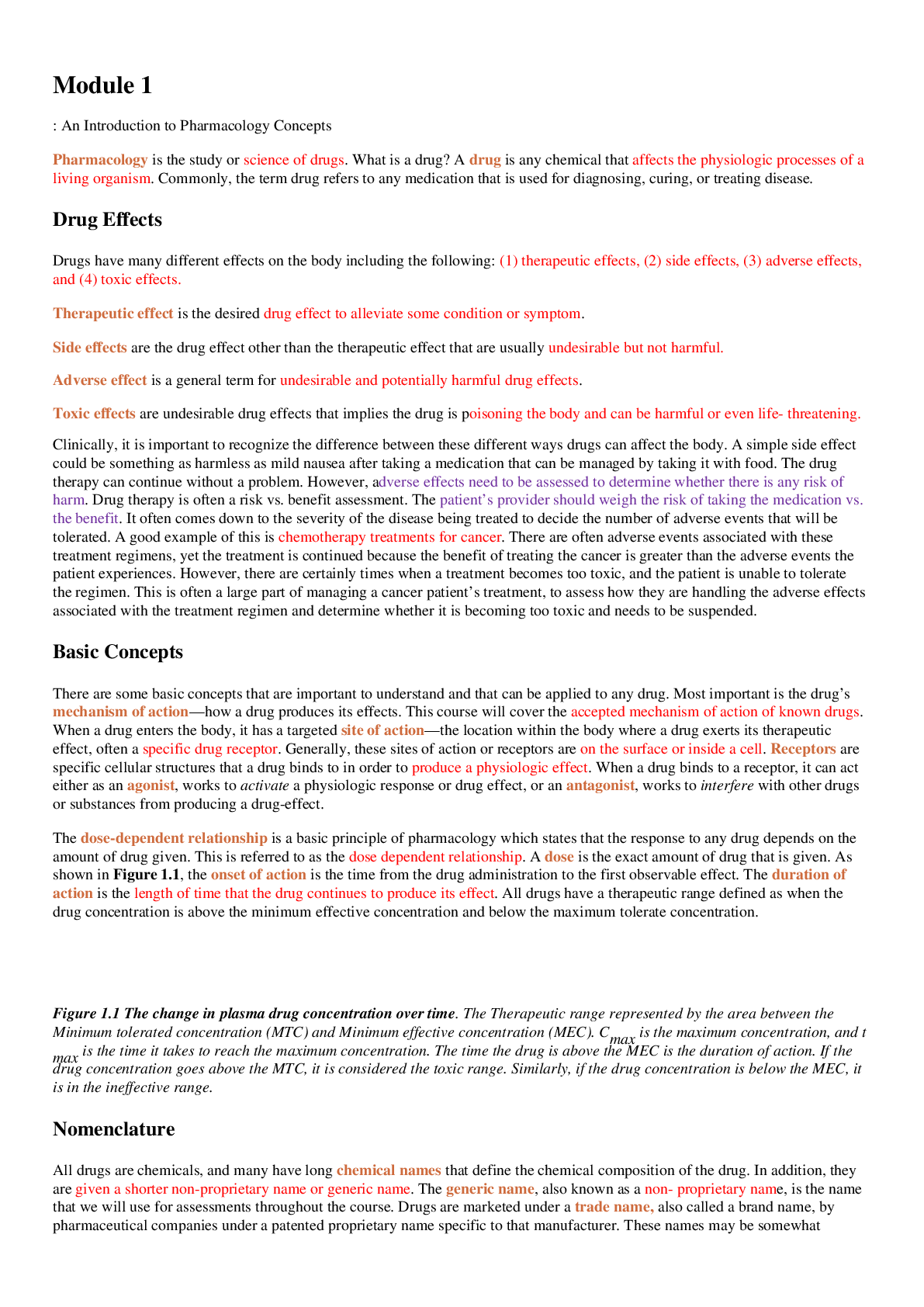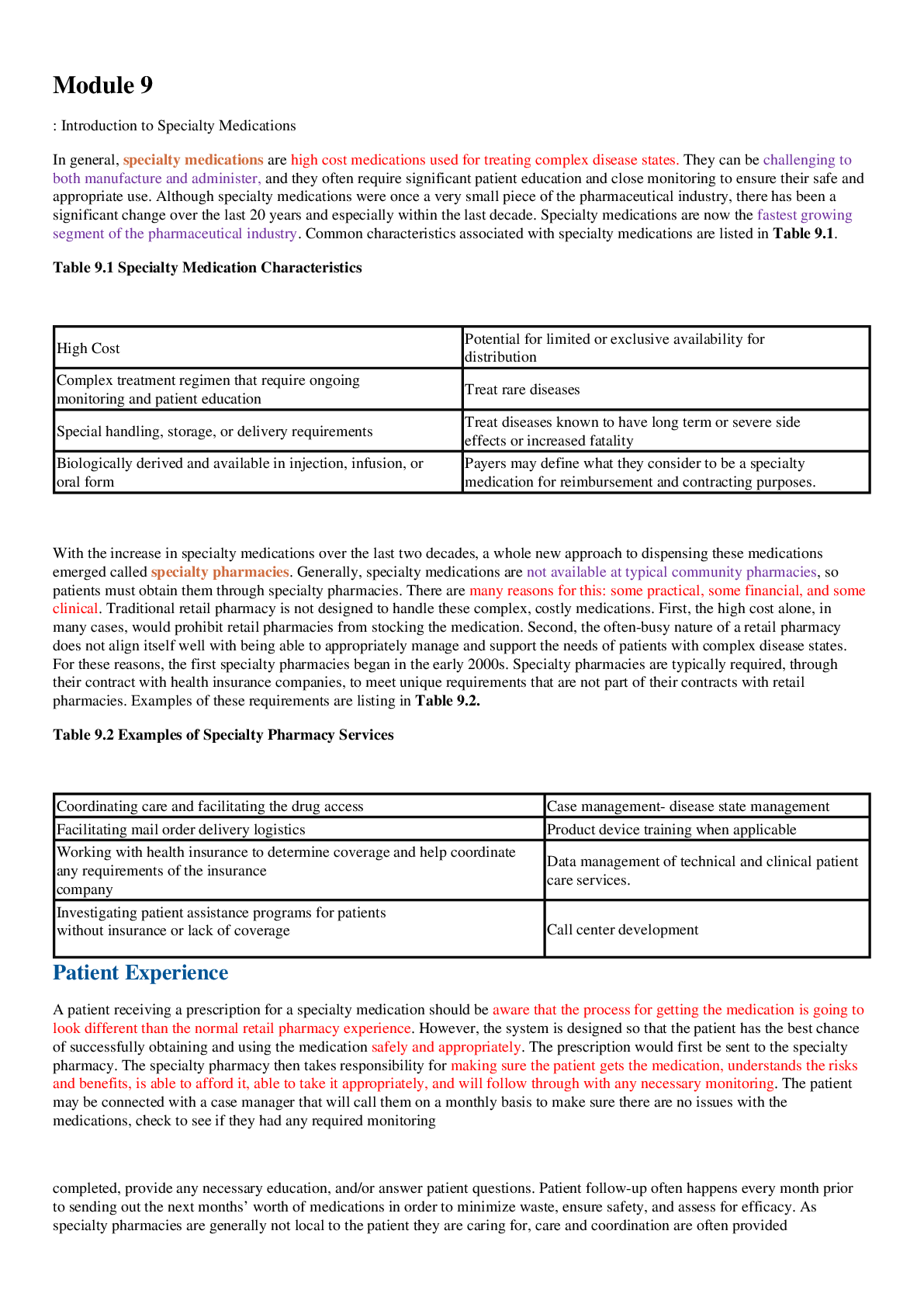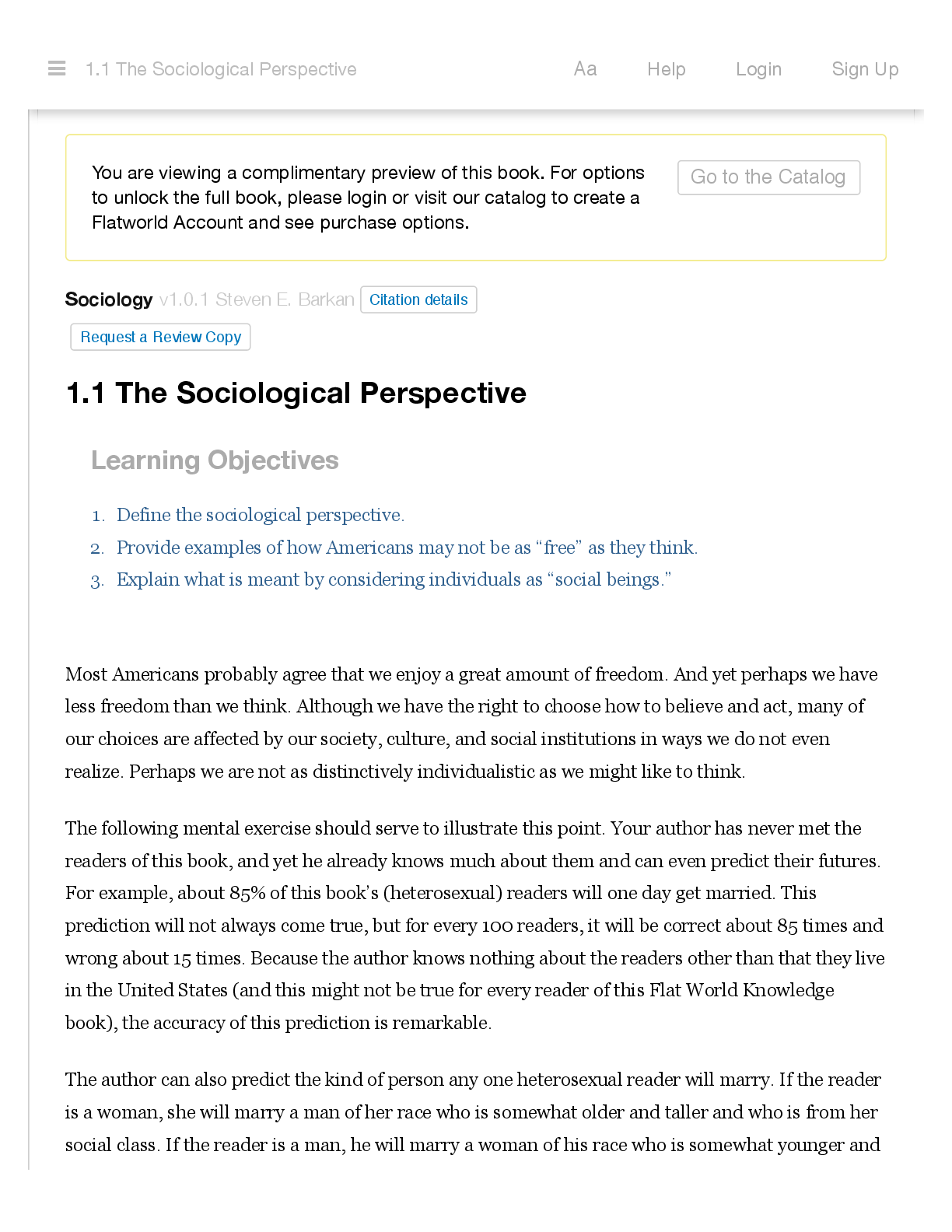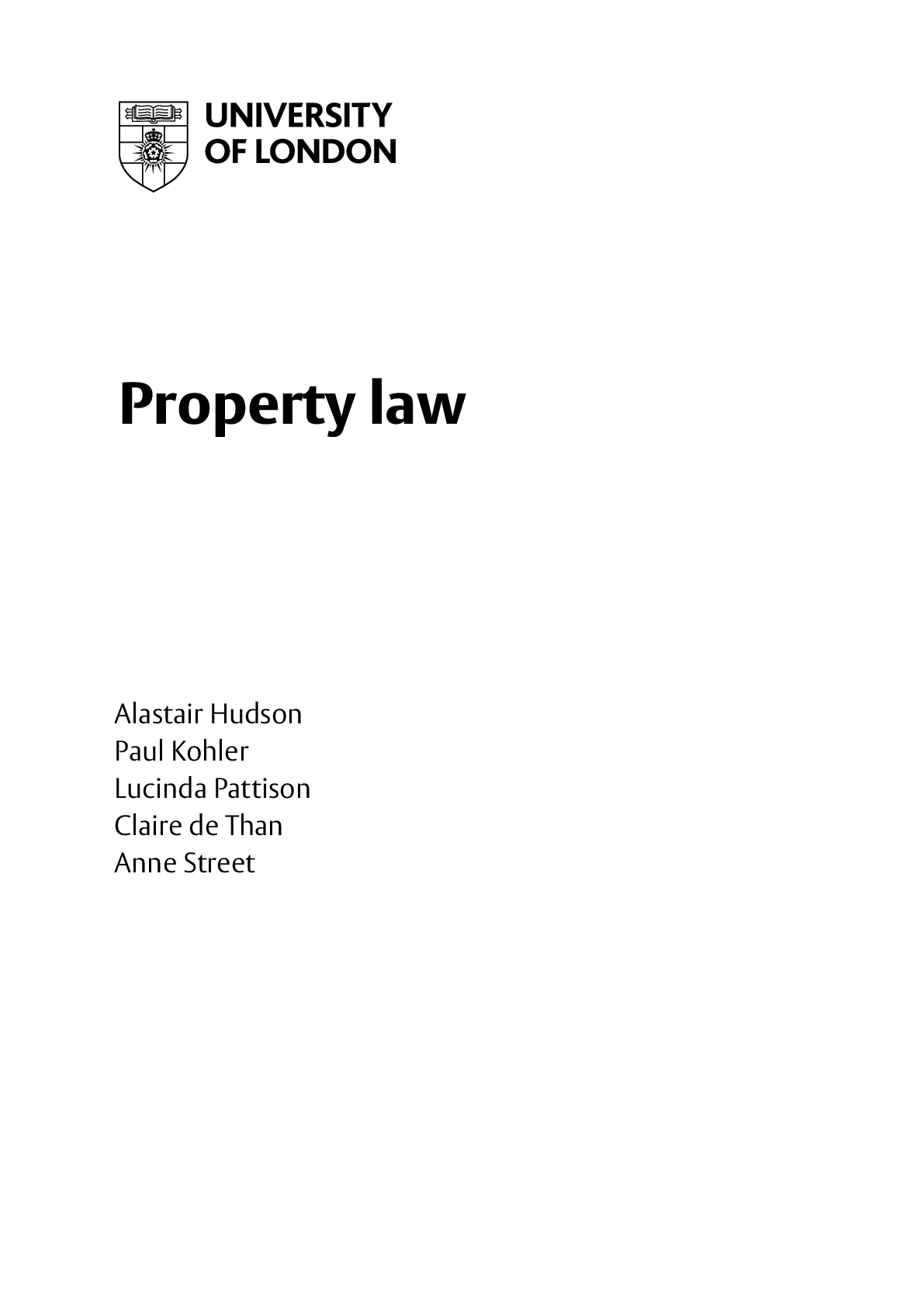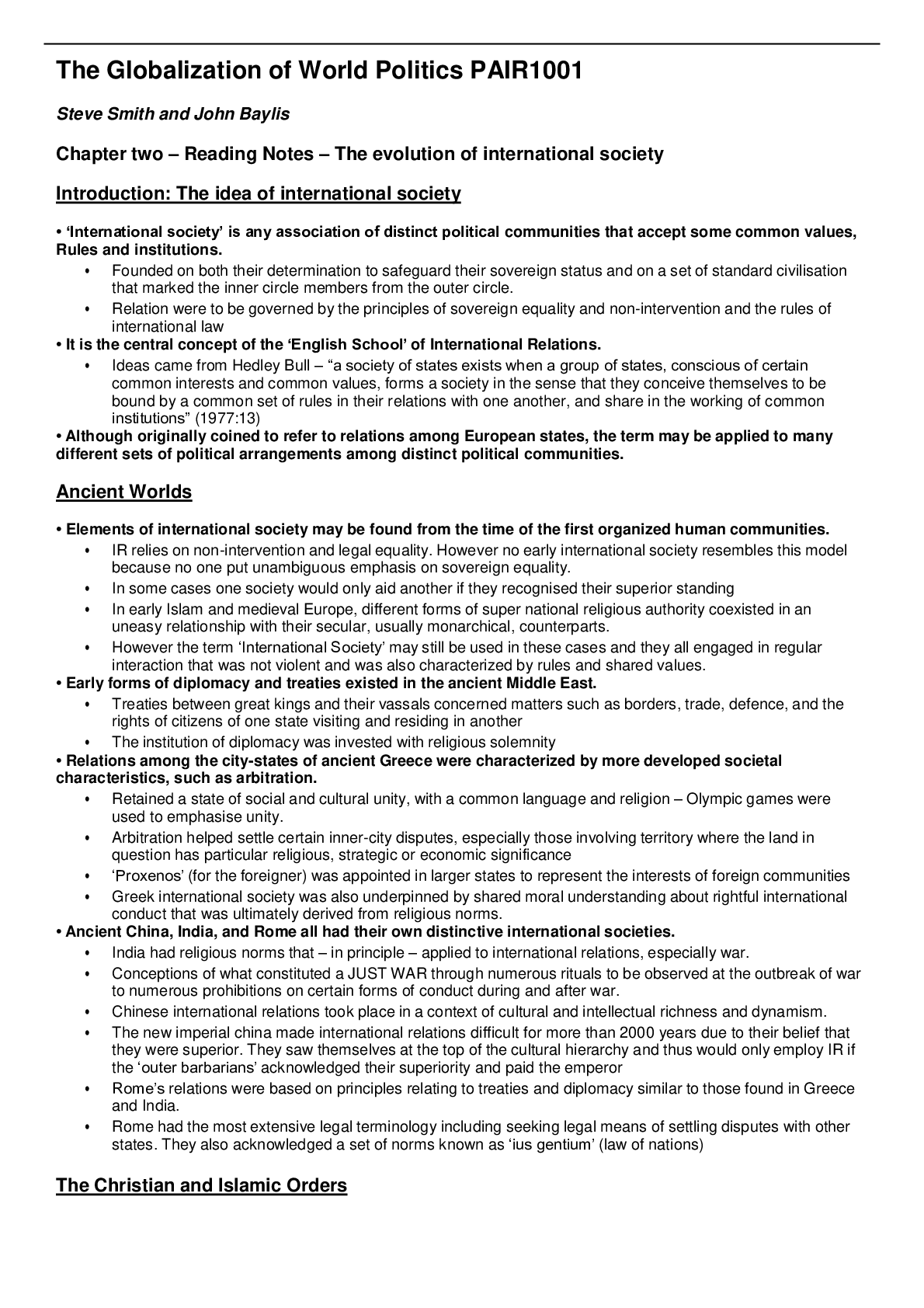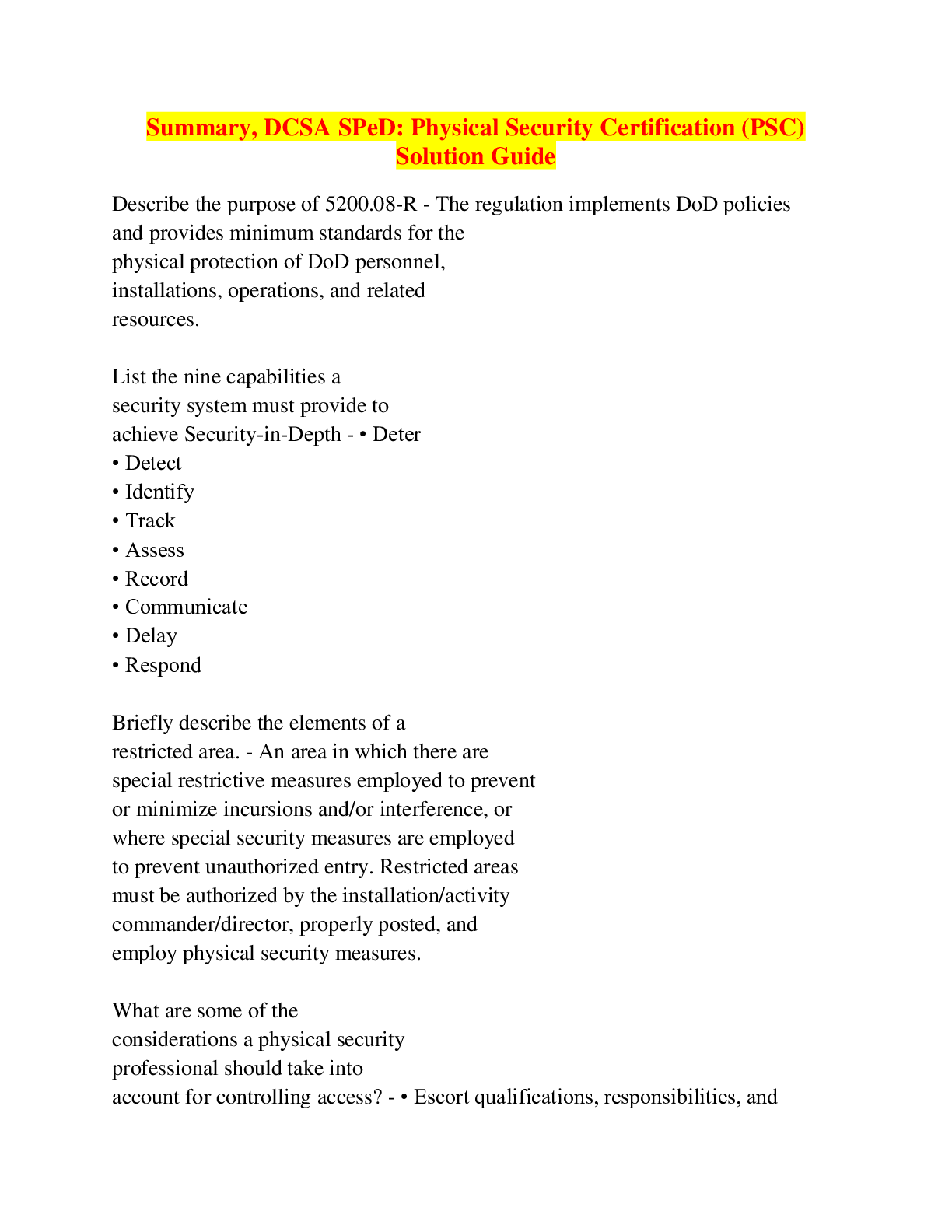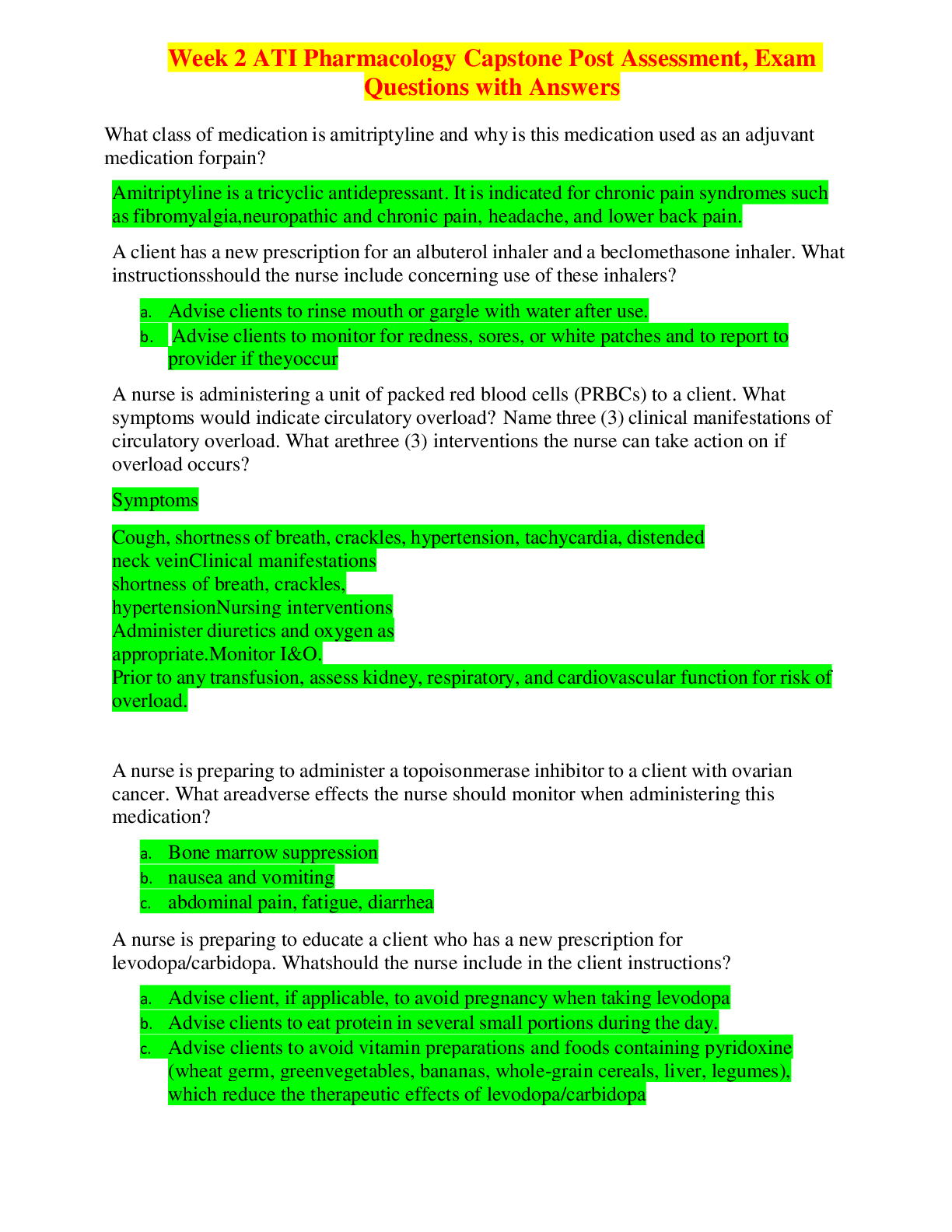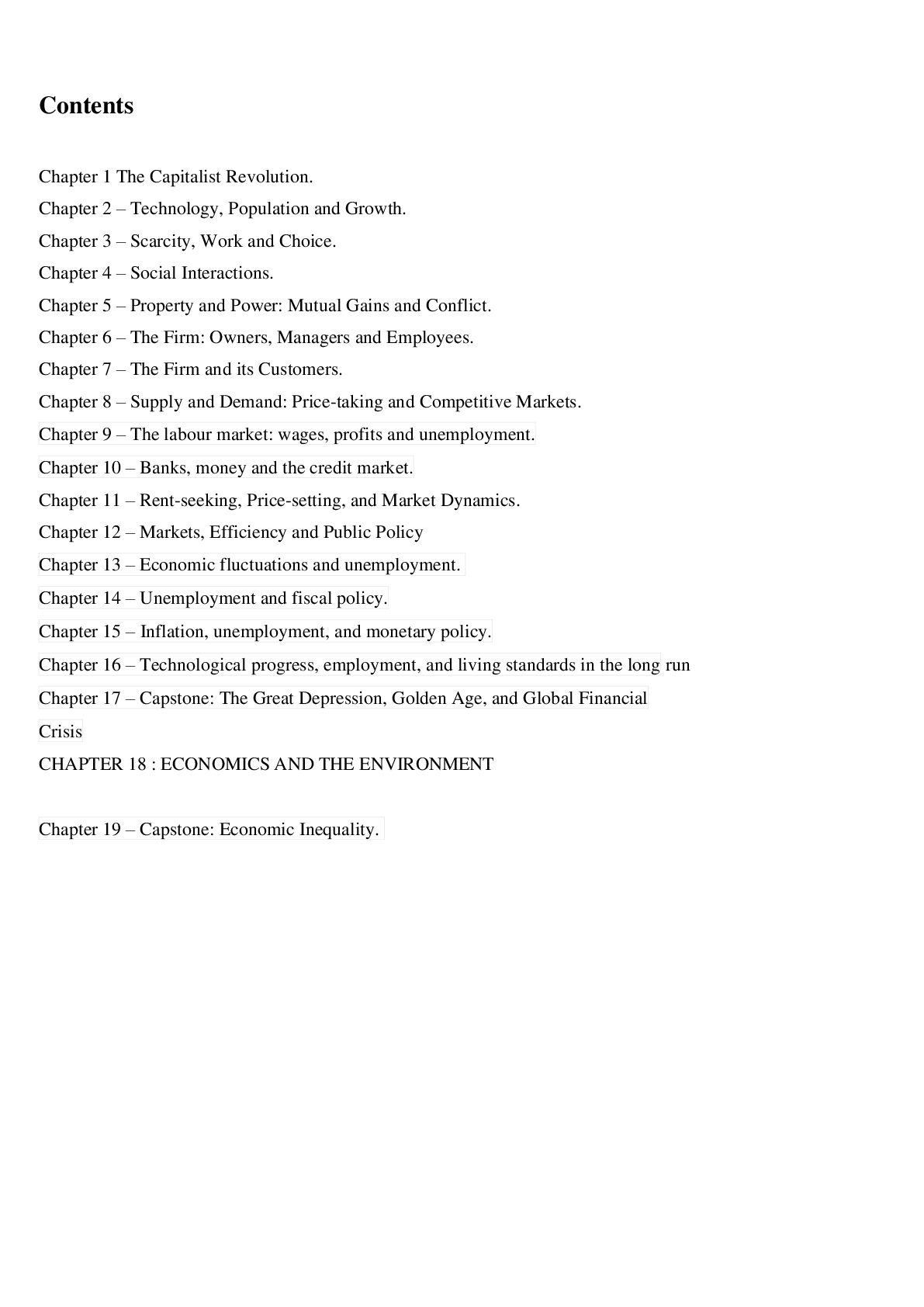Summary Portage Learning NURS 251 Module 8 Introduction to Pain
Document Content and Description Below
Module 8 8.1 : Pain Pain is a basic protective mechanism of the body. The sensation of pain may serve as a warning of imminent danger (fire) or that there is something wrong in the body (cancer). Al ... ternatively, pain can accompany the normal healing process (inflammation). When the intensity and duration of a person’s pain begin to affect their ability to function, analgesics can become very helpful. Analgesics are defined as medications that relieve pain without causing a loss of consciousness. As there are different types of pain, the appropriate pharmacologic therapy may differ from one type of pain to another. Acute pain is sudden in onset and usually subsides when treated. Acute pain often lasts 6 weeks or less in duration. Chronic pain is persistent or recurring and often much more difficult to treat. It is classified as any pain lasting 3-6 months or pain lasting longer than 1 month after healing of an acute injury. Tolerance refers to a state in which the effectiveness of a drug is significantly reduced following its prolonged use. As the body adapts, more of the drug becomes required to achieve the same initial physiological effect. Should the drug be stopped abruptly or smaller dosages given, unpleasant physical and mental symptoms are often observed, a state referred to as withdrawal. Under such conditions, a physical dependence, which is a need to continue taking a drug to avoid the unwanted side-effects of its absence, is said to be established. In order to avoid withdrawal, the continual use of a drug may lead to addiction. Addiction is defined as a chronic neurobiological disease in which genetic, psychosocial, and environmental factors induce changes in the individual’s behavior to compulsively use drugs despite the harm they may cause. For these reasons, the treatment of chronic pain can be especially challenging and should be closely monitored. Most analgesics can be classified as either opioids or non-opioids. Opioid analgesics are synthetic drugs that bind to the opiate receptors in the brain and relieve pain. Opioid analgesics are strong painkillers and are capable of alleviating pain of any origin. They are known to cause tolerance and physical dependence and therefore should be reserved for moderate to severe pain. [Show More]
Last updated: 3 years ago
Preview 1 out of 11 pages
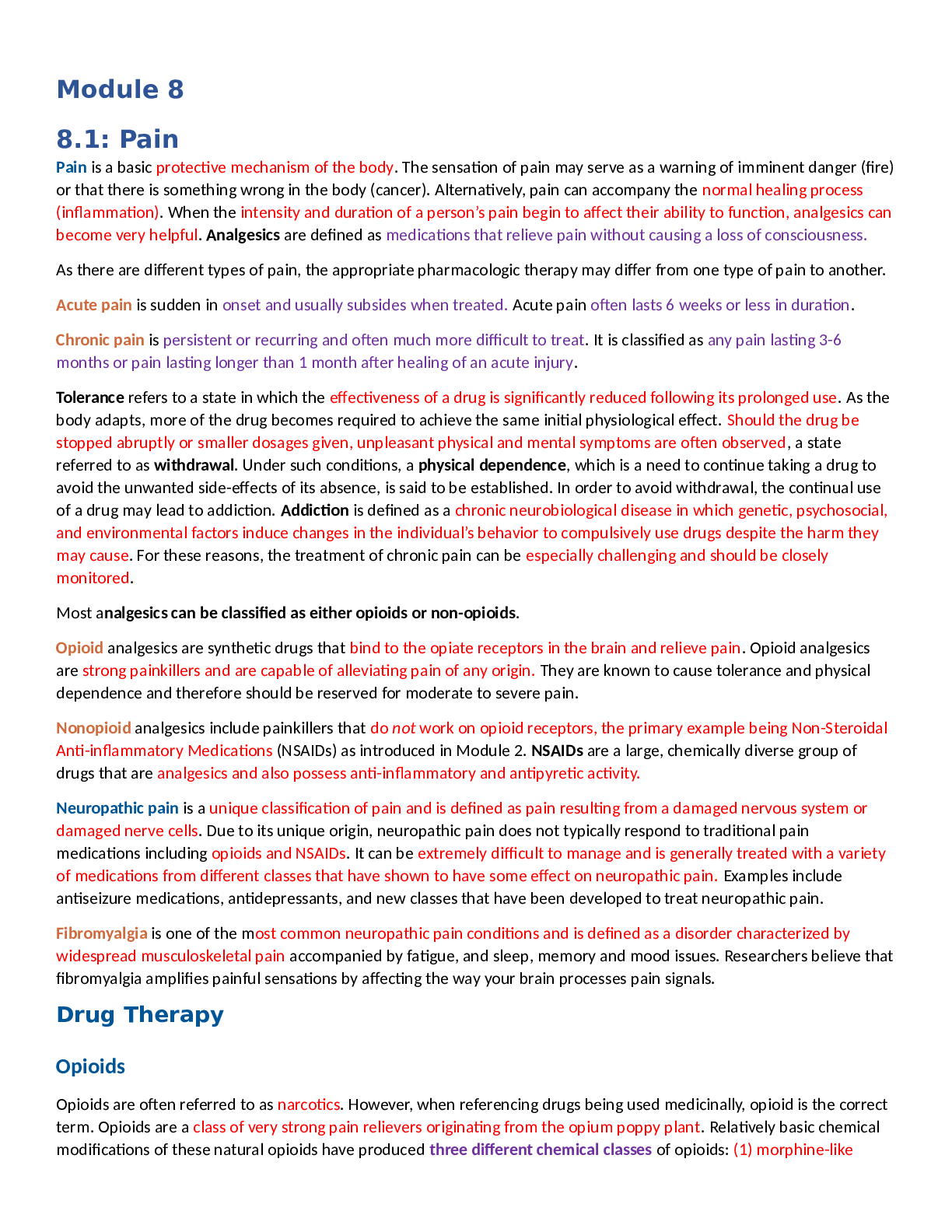
Buy this document to get the full access instantly
Instant Download Access after purchase
Buy NowInstant download
We Accept:

Reviews( 0 )
$11.00
Can't find what you want? Try our AI powered Search
Document information
Connected school, study & course
About the document
Uploaded On
Nov 17, 2022
Number of pages
11
Written in
All
Additional information
This document has been written for:
Uploaded
Nov 17, 2022
Downloads
0
Views
129


